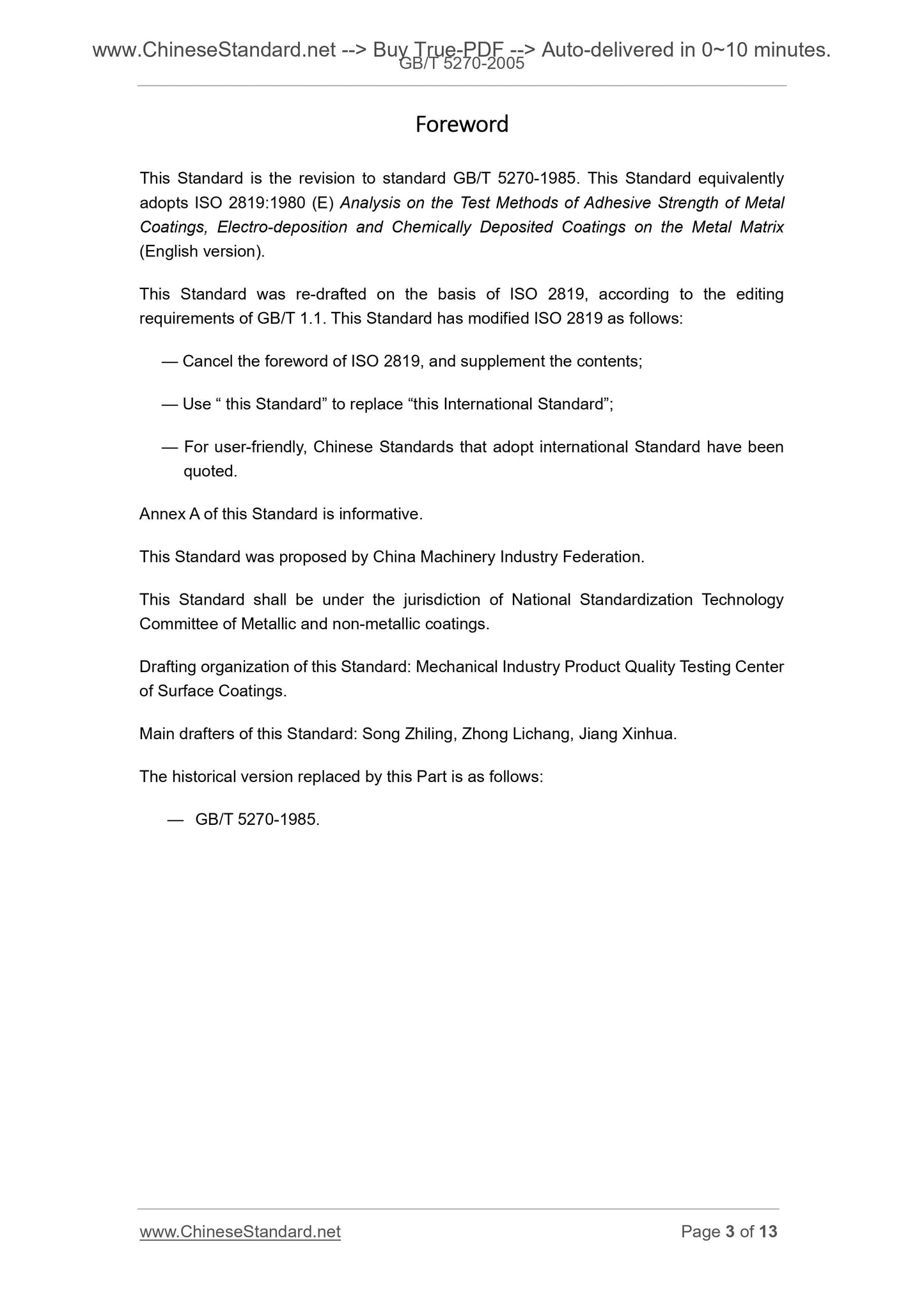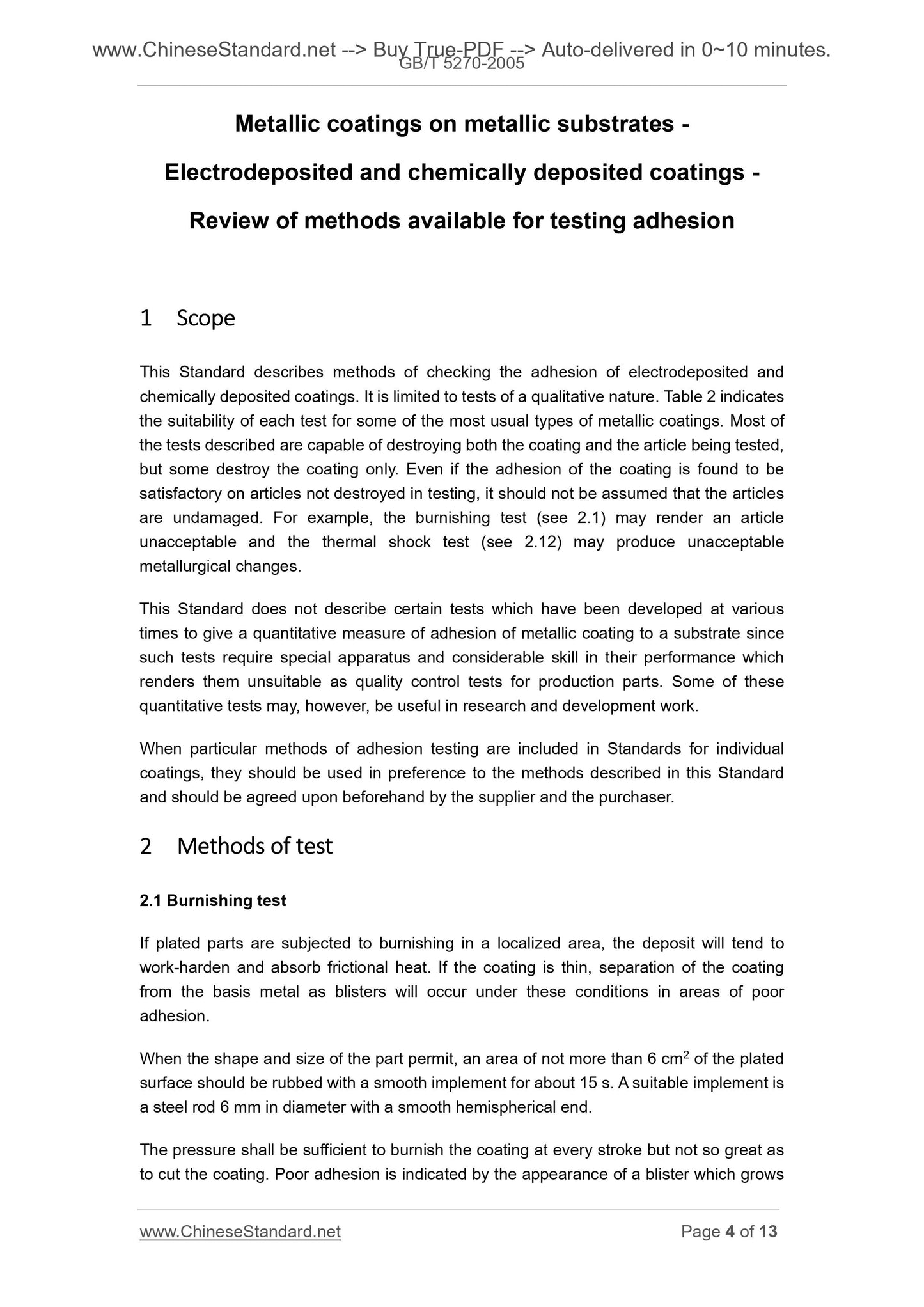1
/
of
4
www.ChineseStandard.us -- Field Test Asia Pte. Ltd.
GB/T 5270-2005 English PDF (GB/T5270-2005)
GB/T 5270-2005 English PDF (GB/T5270-2005)
Regular price
$85.00
Regular price
Sale price
$85.00
Unit price
/
per
Shipping calculated at checkout.
Couldn't load pickup availability
GB/T 5270-2005: Metallic coatings on metallic substrates -- Electrodeposited and chemically deposited coatings -- Review of methods available for testing adhesion
Delivery: 9 seconds. Download (and Email) true-PDF + Invoice.Get Quotation: Click GB/T 5270-2005 (Self-service in 1-minute)
Newer / historical versions: GB/T 5270-2005
Preview True-PDF
Scope
This Standard describes methods of checking the adhesion of electrodeposited andchemically deposited coatings. It is limited to tests of a qualitative nature. Table 2 indicates
the suitability of each test for some of the most usual types of metallic coatings. Most of
the tests described are capable of destroying both the coating and the article being tested,
but some destroy the coating only. Even if the adhesion of the coating is found to be
satisfactory on articles not destroyed in testing, it should not be assumed that the articles
are undamaged. For example, the burnishing test (see 2.1) may render an article
unacceptable and the thermal shock test (see 2.12) may produce unacceptable
metallurgical changes.
This Standard does not describe certain tests which have been developed at various
times to give a quantitative measure of adhesion of metallic coating to a substrate since
such tests require special apparatus and considerable skill in their performance which
renders them unsuitable as quality control tests for production parts. Some of these
quantitative tests may, however, be useful in research and development work.
When particular methods of adhesion testing are included in Standards for individual
coatings, they should be used in preference to the methods described in this Standard
and should be agreed upon beforehand by the supplier and the purchaser.
Basic Data
| Standard ID | GB/T 5270-2005 (GB/T5270-2005) |
| Description (Translated English) | Metallic coatings on metallic substrates. Electrodeposited and chemically deposited coatings. Review of methods available for testing adhesion |
| Sector / Industry | National Standard (Recommended) |
| Classification of Chinese Standard | A29 |
| Classification of International Standard | 25.220.20 |
| Word Count Estimation | 10,141 |
| Date of Issue | 2005-06-23 |
| Date of Implementation | 2005-12-01 |
| Older Standard (superseded by this standard) | GB/T 5270-1985 |
| Adopted Standard | ISO 2819-1980, IDT |
| Regulation (derived from) | Announcement of Newly Approved National Standards 2005 No. 9 (No. 83 overall) |
| Issuing agency(ies) | General Administration of Quality Supervision, Inspection and Quarantine of the People Republic of China, China National Standardization Administration Committee |
| Summary | This standard specifies the inspection cover electrodeposition and chemical deposition adhesion strength of several test methods. They are limited to qualitative test. This standard does not address the formulation of each period of the metal cover layer and the base metal adhesion strength of some of the quantitative test methods. Because, in practice, such tests require special equipment and very skilled, which makes parts of the discomfort site for product quality control tests. However, these quantitative test methods may be useful for research and development work. |
Share







